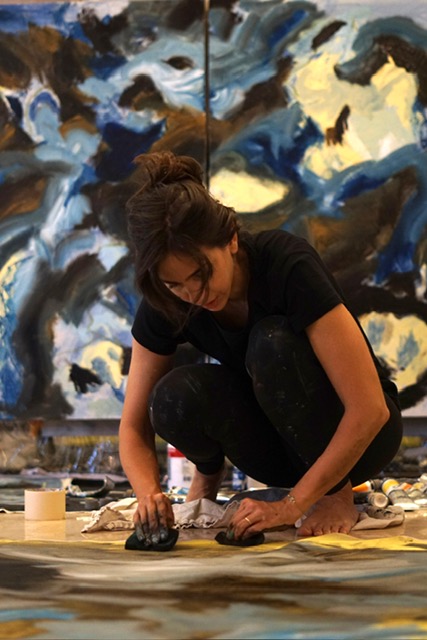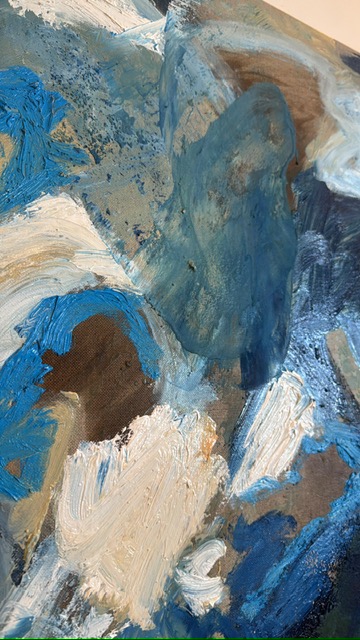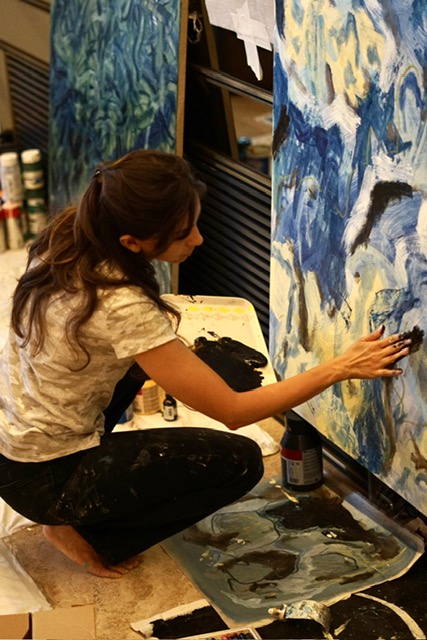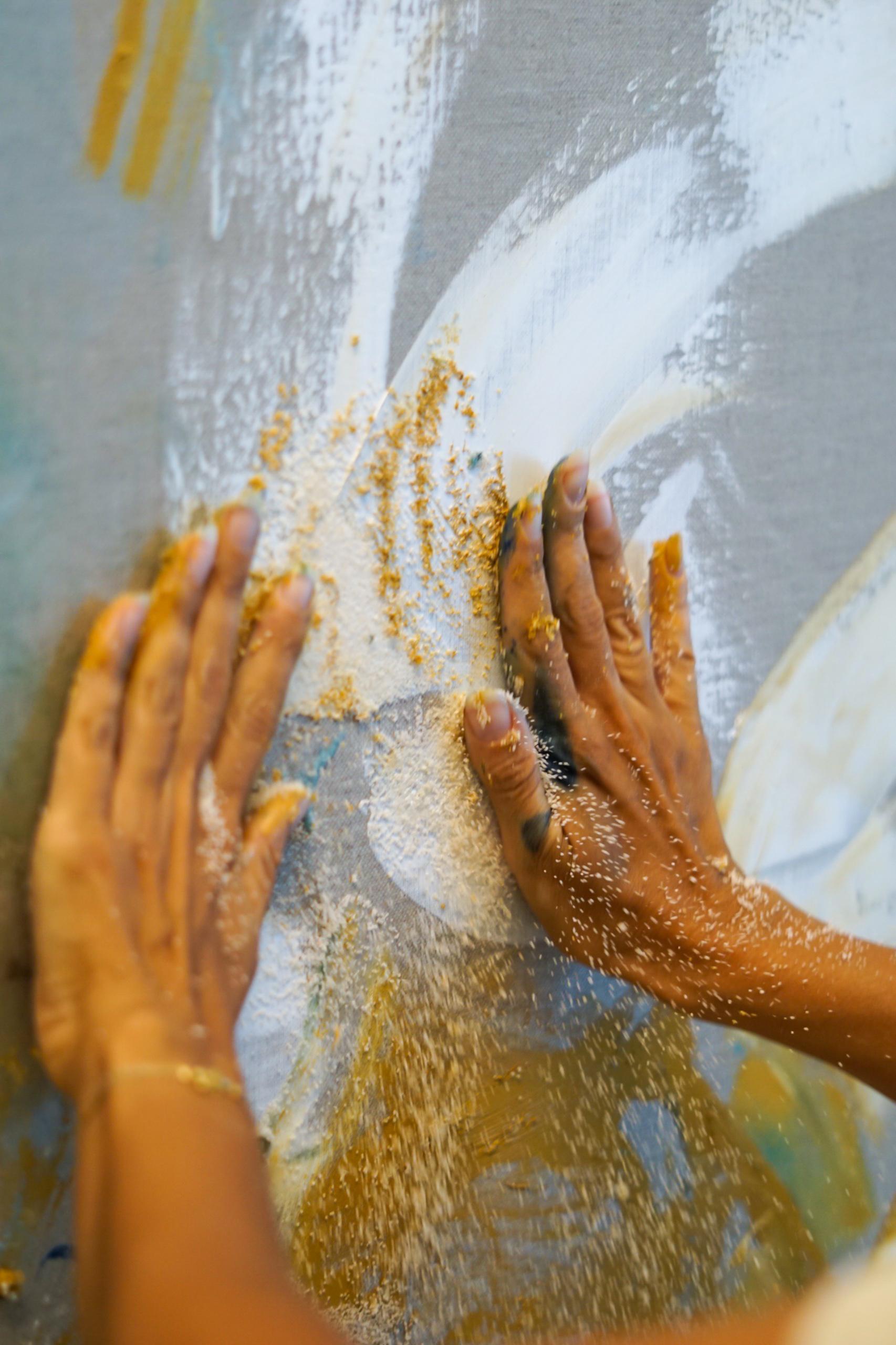Capturing chaos, confinement and clarity on canvas
The paintings of Caleen Ladki provide open, honest and raw snapshots of her personal journey, which spans love, loss, uncertainty and geographical borders. Here, Ladki explains how she not only recreated, but even processed landmark lived experiences and shifting landscapes through her artistic practice.

Do you come from an ‘artistic’ family and was art something you always wanted to do?
While I wouldn’t describe my family as traditionally ‘artistic’, there was always a strong appreciation for creativity and aesthetics in our home. My father, an engineer by profession, had a deep passion for architecture, interior design, fashion and literature - so I grew up in an environment where artistic expression was valued and encouraged. We spent time visiting museums, galleries and design districts both in London and elsewhere, which naturally sharpened my visual awareness from an early age. I started painting as a child, and it quickly became clear to me that this wasn't just a hobby - it was a way of thinking and processing the world. That instinct has never left me. Over the years, it evolved from a personal inclination into a full professional commitment.

You studied at Central Saint Martins and graduated from there. How do you think your time at this creative hub shaped your practice?
Central Saint Martins played a pivotal role in shaping both the conceptual and technical dimensions of my practice. Studying in London - particularly at an institution so embedded in the international creative community - provided access to a wealth of perspectives. What made the experience so valuable was not just the coursework, but the dialogue: with tutors who challenged us intellectually, and with peers from across disciplines like fine art, performance, jewellery and fashion. This cross-pollination deeply influenced how I approach composition, materials and the narrative potential of a painting. CSM encouraged me to experiment fearlessly, to ask better questions and to treat art-making as an evolving, intellectual process - not just a visual output.

You’ve referenced your return to Beirut in 2014 as the catalyst for your first series, Birds of Freedom. Can you discuss the conceptual framework behind that body of work?
Birds of Freedom was the first body of work where personal experience and formal experimentation converged in a meaningful way. Relocating to Beirut marked a major cultural and psychological shift for me, and painting became a primary means of navigating that transition. What started as emotional release quickly took on a larger conceptual form. The series explores ideas around confinement, displacement and identity - not just biographically, but as universal themes. The physicality of the work (including walking across the canvas and using large-scale gestural movements) reflects the tension between control and chaos, and the need to reclaim space - both internal and external. It was an important moment for me in understanding how formal decisions (scale, movement, colour) can embody complex psychological states. That series was followed by All Eyes on You, which explored social surveillance and the metaphysical symbolism of the evil eye. I became interested in how superstition, fear and cultural expectations impact behaviour - especially in environments where transparency can feel dangerous. This marked a shift from internalised emotion to a more observational and societal lens. To make the emotional arc more accessible: the repetitive patterns in my earlier work reflected a sense of confinement and the desire for structure amidst uncertainty. The ‘eyes’ in the All Eyes on You series symbolized both surveillance and self-awareness - a visual representation of navigating social pressure and cultural expectations. Throughout these series, I went through several experimental phases - playing with tools, materials, brushstrokes and textures - searching for a visual language that could authentically translate internal states into form. What eventually emerged was a more gestural, physical and expressive approach that aligned with my internal chaos and eventual path toward peace. The evolution of my technique - from rigid patterns to fluid movement, from darker tones to softer pastels - mirrors the transformation of my psychological landscape.

Your first solo show, Uncertainty, was held at Artbooth Gallery in Abu Dhabi in 2023. What informed the direction of that exhibition?
The works in Uncertainty were created during a period of upheaval in my personal life, but my aim was to use the instability as a conceptual frame rather than simply a narrative. I was exploring the psychological effects of unpredictability - how the human mind and body respond to ongoing ambiguity. This sense of emotional and spatial dislocation became central to the series, which echoes Birds of Freedom but through a more restrained, introspective visual language. The exhibition dealt with the duality of chaos and control, grief and grounding. I was particularly interested in how visual tension - through layering, opacity and disrupted forms - can mirror internal states of flux. In many ways, Uncertainty allowed me to reflect critically on the idea of ‘home’ as both a physical location and an emotional terrain. It was a body of work that deepened my commitment to using painting as a way of thinking through complex states of being.

What are you currently working on?
My current body of work marks a formal and thematic shift. I’m exploring the concept of Barzakh, the metaphysical space between life and the afterlife in Islamic cosmology. This arose following the recent loss of my father and through conversations with my children about life, death and legacy. While the emotional dimension is there, the series is anchored in research - both theological and philosophical. There’s been a material transformation in the work too. I've transitioned from acrylics to oils, allowing for richer blending and more atmospheric layering. I’m using a muted, earthy palette that speaks to the spiritual symbolism of earth, time and transition. This series is about thresholds - the in-between - and how we understand presence and absence, temporality and eternity. While the theme is personal, the goal is to create a body of work that resonates more universally with ideas of mortality, memory and spiritual continuity. This body of work also marks a shift in visual language - I evolved from pattern and motif to a more organic, fluid mode of expression.